The Story of Angel Tree
"In 1979, in a small Virginia town, an idea was born."
In 1979, in a small Virginia town, an idea was born. It was new and innovative, and much like the Red Kettle, it has become a tangible way for people to share the meaning of Christmas in communities across the United States and even around the world.
In Lynchburg, VA, local Salvation Army officers Captains Charles and Shirley White approached a newly opened shopping mall, hoping to partner with them in the Christmas kettle effort. While they were unable to have kettles inside the mall, management offered their Christmas tree display to help in some way.
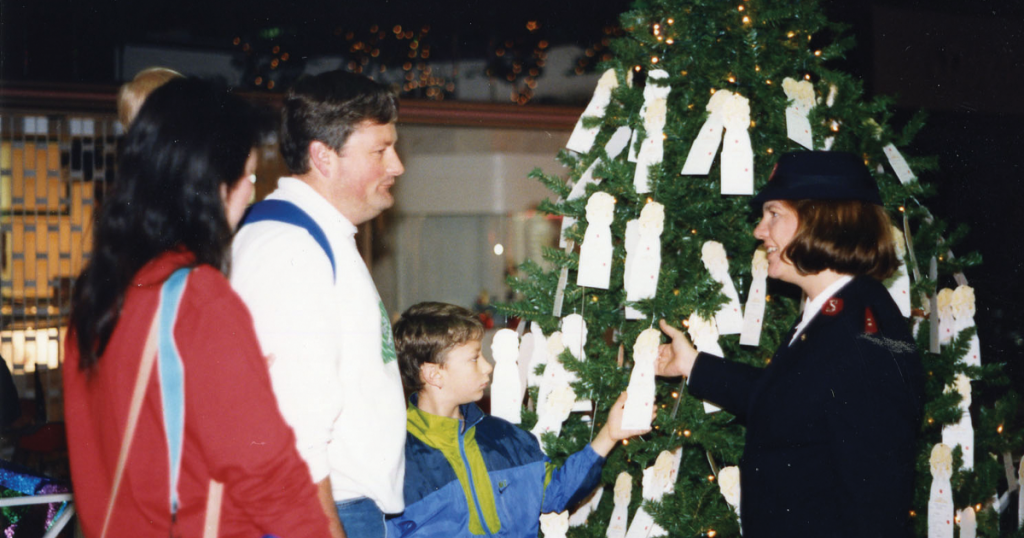
Looking back, Shirley White, who retired with the rank of Lt. Colonel, explains, “We thought about how children are given toys and useful items at Christmas through the Army’s toy program. We also thought about when they go back to school and see their friends in new clothes, and they don’t have any because their parents couldn’t afford to buy them for Christmas. We wanted to help with that. So, we took a walk through the mall and entered a Hallmark store. I spotted a Christmas card with three angels on the front. So, I said, ‘What if we cut these and make three Angels out of it, each with a child’s clothing size on the back and hang them on the tree.’”
That simple plan 42 years ago was met with an outpouring of support from residents of Lynchburg, who spread Christmas joy by providing 472 children with clothing. Since then, the Angel Tree Program has grown to help more than a million children and their families.


The next year, even more families were helped, and the community responded with more than clothes. They donated bicycles, toys and other items. In 1982, the Whites were sent to Nashville, TN, and proposed the Angel Tree to the Advisory Board. Board members were hesitant to start something new, but the Whites persisted, and soon radio station WSM co-sponsored the program. Colonel White says that from there, the program blossomed, with 10,000 Angels participating. Two TV spots introduced the Angel Tree to a wider audience and shortly after the idea became national. “It’s just letting the Lord lead you,” White says about the program’s success. Over the years, she has been deeply impressed by those who run the program in each community, by the spirit of giving and caring shown by those who adopt an Angel and by the appreciation expressed by the Angels themselves. “We’ve got tons of letters thanking us for all that was provided for their family. The Army came through and did it. It’s very gratifying.

“We learned from those we registered as Angels that they just wanted somebody to hear their story,” White continues, “that somebody cared about what was going on in their lives. It also gave volunteers an opportunity to meet with the people. It’s a reciprocal relationship, and not just about us giving somebody something, but a ministry for everybody involved. People wanted to do something for somebody. We gave them the logistics of how to do it.”

At first, the logistics were challenging, especially since the response was so great. There was the matter of identifying Angels correct and the need for a code so that organizers could ensure the right gifts made it to the right Angels. “There are a million-plus details to be worked out each year,” White says. “But somehow it always happens. God blesses it. And the community embraces it, and it comes together.” Behind the logistics are stories of connection and hope.
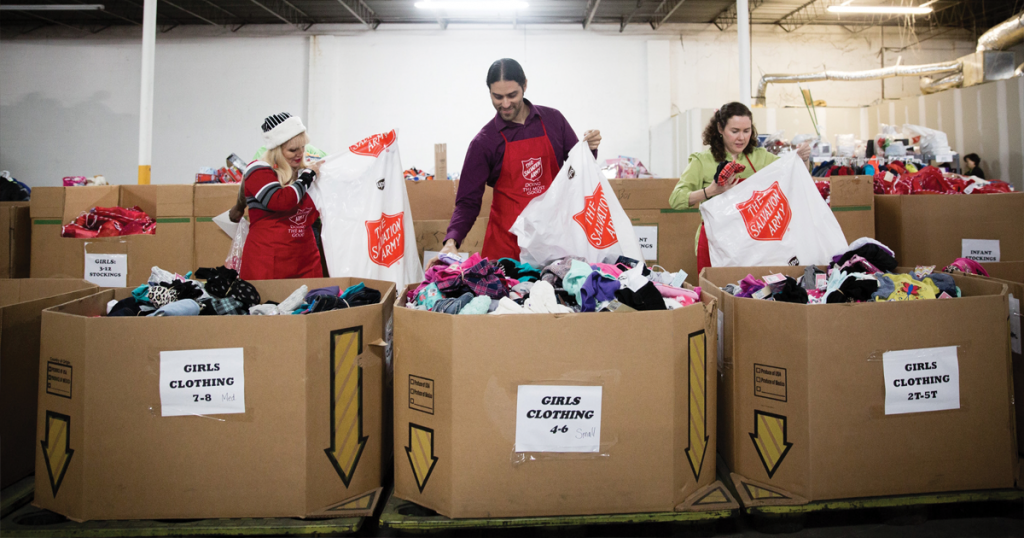
For instance, White remembers a family where the mother and father were blind and found it difficult to communicate. Their three children became their interpreters and helped, but their apartment had hardly any furnishings. Through the Angel Tree program, the children received gifts and the family received food for Christmas dinner. The Whites worked with a company to supply them with things they needed. “It was a heartbreaking story about how they had come to be in that situation. We formed a wonderful relationship,” says White. “In fact, country music singer Jimmy Wayne helped out. He wanted to deliver everything to them, and it inspired the song that he wrote about the Angel Tree. Then, he wrote a book about it and even a produced a movie.”

Another account involved a single mom and her daughter. She worked at a restaurant and did not make much money. She mentioned her daughter didn’t have a bed. The Angel Tree team were determined to get her one. When the time came to distribute gifts, the mother didn’t show up. “I needed to get this bed to this lady,” White says. “I found out where she was working, so I went to the manager and asked if she still worked there. She had changed locations, so when we found her we delivered the bed to that little girl.”
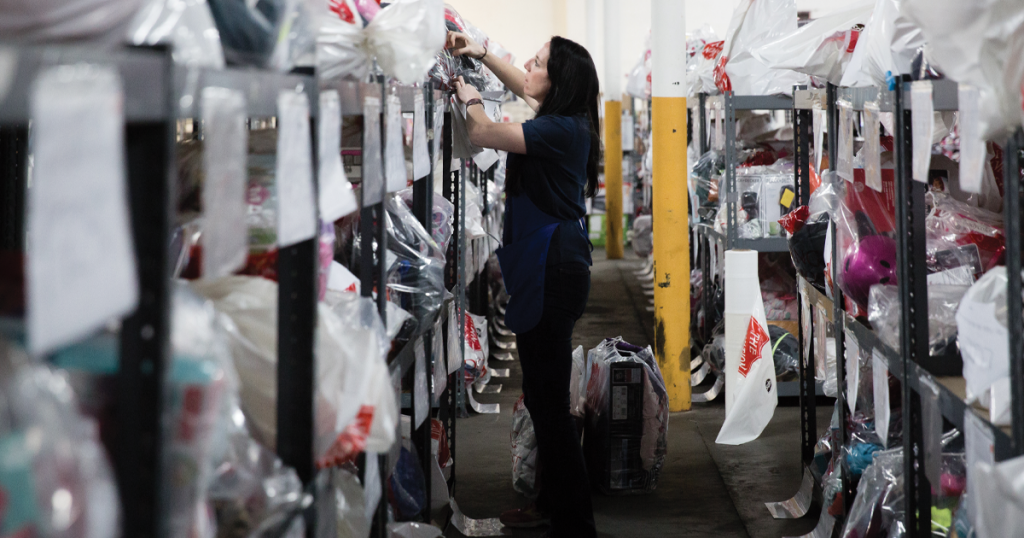
Many more such stories are displayed in communities across the nation and abroad as the Angel Tree program has grown to help more than a million children and their families. The beauty of the Angel Tree program is found in the personal connections formed. Sponsors adopt an Angel by name, know their age, and families can go together to shop for the best gifts. Because of the generosity of communities all across America, Hope Marches On.

How Angel Tree Works
Found in Walmart stores, malls, companies and corporations, Angel Trees are decorated with numbered paper Angel Tags with the first name, age and gender of a child in need. Sponsors remove one or more tags from the tree and purchase appropriate gifts for the child or children described on the tags.
Individuals, companies and groups can sign up to participate either in-person or online by adopting Angels or hosting trees. Businesses and groups receive tags to put on their office (or store) Christmas tree.
The Salvation Army screens each family and prepares a list of toys and clothing the children want.

Salvation Army staff assigns Angels to each sponsor and will mail each Angel Tags. Each tag has information about the Angel and is ready to be hung on your Christmas tree.
- Sponsors shop for the Angels.
- Collect all the gifts (new and unwrapped so parents can wrap them for their child) from employees and/or customers and coordinate a date with the Army when our drivers can pick-up the toys.
- When you adopt an Angel, you don’t just give a child a special Christmas memory, you also ease the burden of a struggling family.
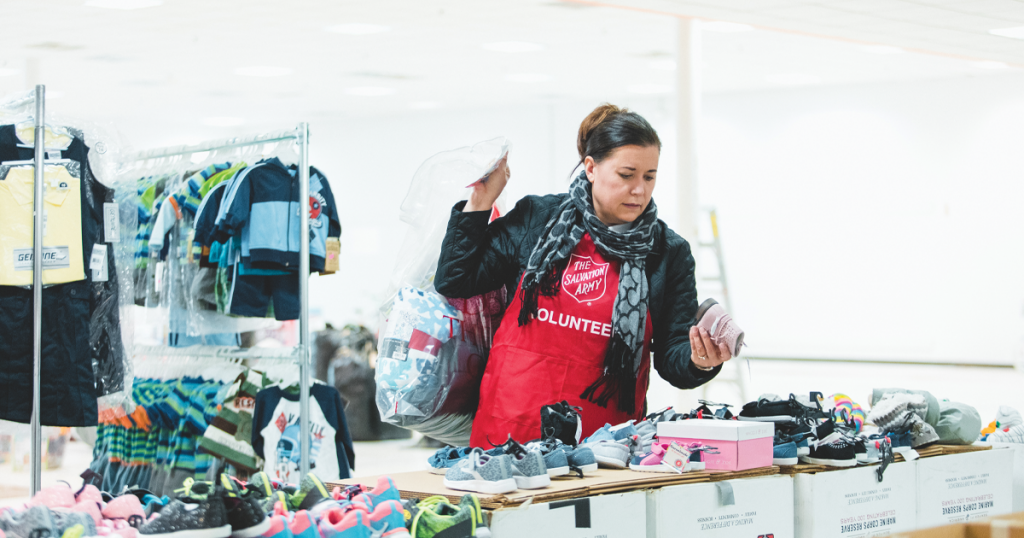
Those needing help to provide their children with gifts can find out about eligibility by contacting the local Salvation Army.
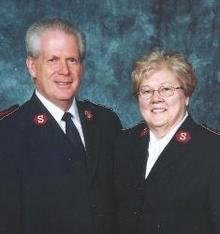
Lt. Colonel Shirley White, whose husband Lt. Colonel Charles White was promoted to Glory in 2019, credits him with the vision for the program, with her in charge of the logistics. She lives in retirement in Tennessee where she continues to serve in Salvation Army ministry five days a week. Hear the extended interview with Lt. Colonel Shirley White about the Angel Tree program on the Fight for Good Podcast.
Though The Salvation Army shares the copyright for Angel Tree with Prison Ministries, they are separate programs run independently by each organization.
This article was published in the December 2021 issue of The War Cry.







